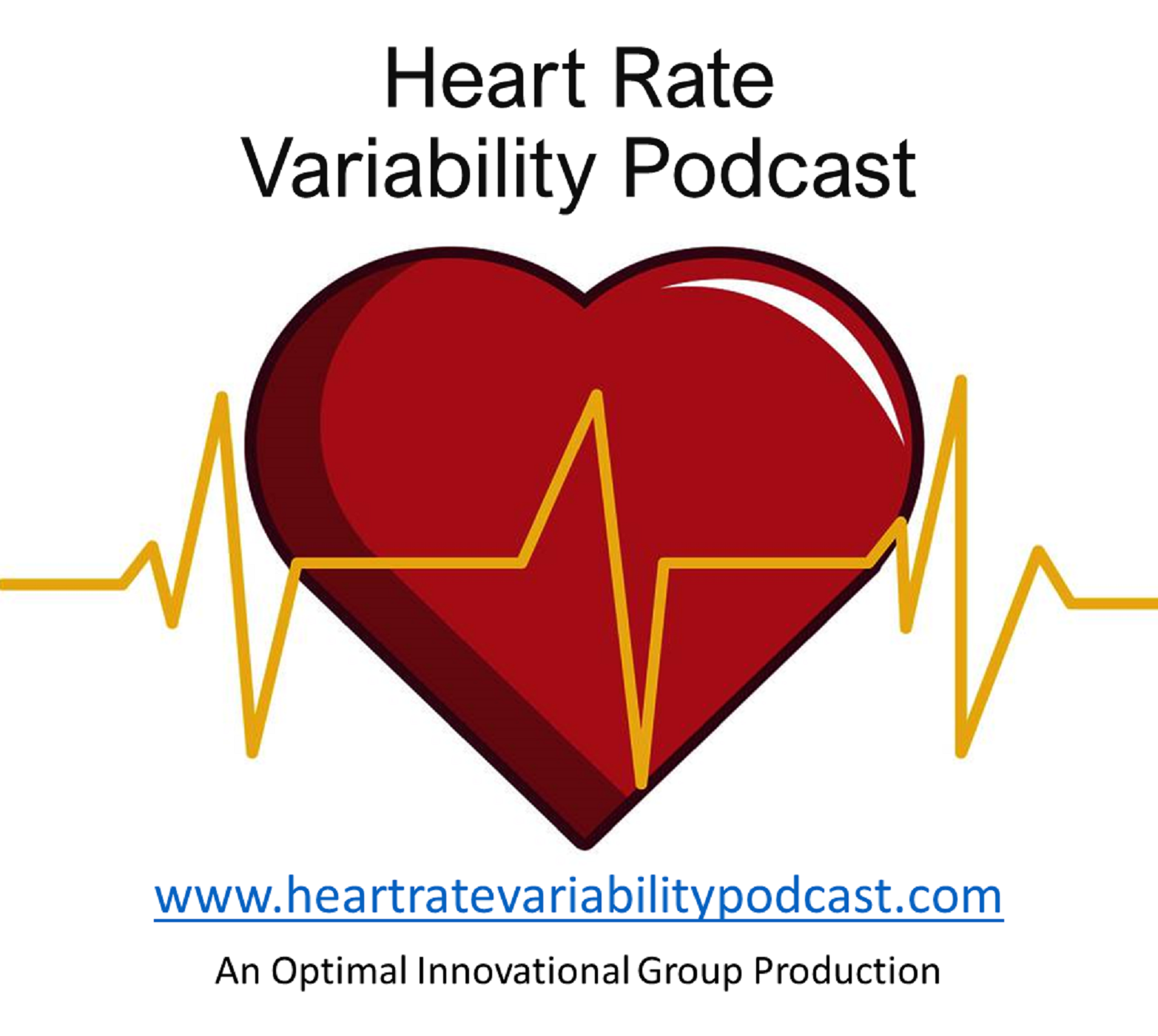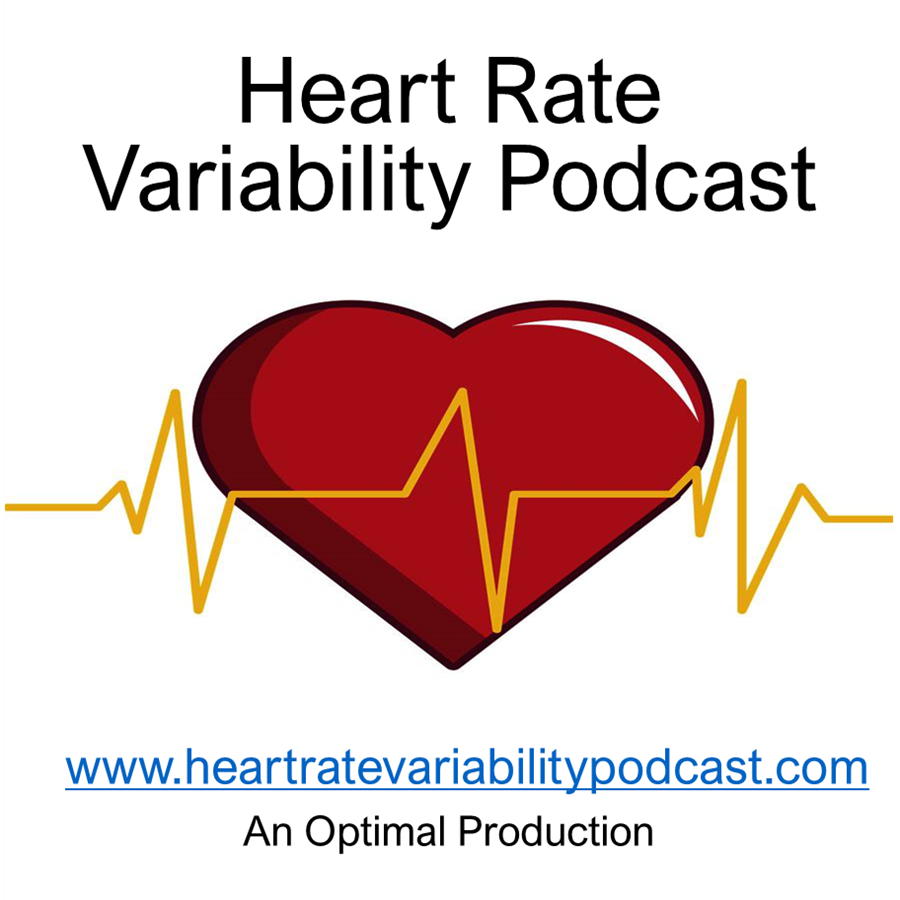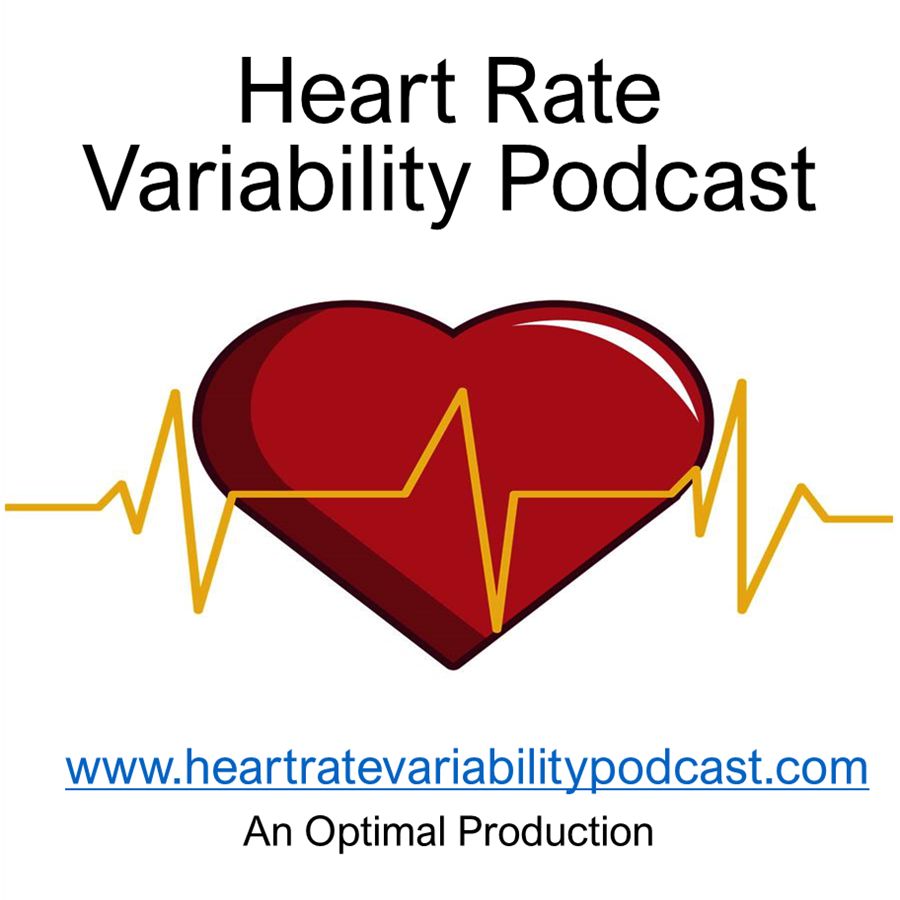[00:00:00] Welcome friends, to the Heart Rate Variability Podcast this week in HRV Edition.
[00:00:05] Each week we will explore the latest research and news from the dynamic world of hrv. And today's lineup is especially rich, a veritable feast for the mind. Whether you are a dedicated clinician using these metrics in your practice, a meticulous researcher pushing the boundaries of what we know, or simply a curious soul seeking to understand the hidden language of your own heartbeat, you are in the right place. We'll delve into a range of fascinating topics from chronic disease to elite military performance, from ancient breathing practices to cutting edge wearable technology.
[00:00:41] So let's settle in and begin this journey into the subtle yet profoundly powerful rhythms of the human heart.
[00:00:48] Our first stop on this journey brings us to a condition that affects millions worldwide.
[00:00:53] Type 2 diabetes. It is a relentless foe, a daily challenge of constant vigilance, glucose monitoring, dietary restrictions, medication adjustments and the heavy mental burden of anticipating long term complications.
[00:01:07] The question a team of researchers led by Wu and colleagues posed in the journal Applied Psychophysiology and Biofeedback was a crucial one. Could a non pharmacological intervention like HRV biofeedback make a measurable difference in this struggle?
[00:01:22] They recruited a group of patients and embarked on a six week trial. Patients would come into the clinic, sit comfortably and be connected to sensors. The process was not complex or invasive. They were simply guided to synchronize their breathing with their heart rhythms. The technology would provide real time feedback showing them their own nervous system in action, a visible representation of the subtle shifts occurring within.
[00:01:49] It was almost like tuning an instrument until it plays in perfect harmony a process of conscious regulation leading to a deeper physiological change. After six weeks of this consistent practice, the results were not just encouraging, they were illuminating. The study found that several key HRV indices improved significantly. The patient's resting breathing rate slowed down, becoming more relaxed and efficient.
[00:02:15] This alone is a meaningful shift as a calmer breath often signals a calmer nervous system. Beyond the physiological changes, there were significant psychological improvements. Depression scores came down and perhaps even more importantly, patients reported better self care behaviors. They were more engaged in their own health, more motivated to make the choices that would lead to better outcomes. The body, it seemed, was learning to rebalance and the mind followed right along, finding a renewed sense of hope and agency. The one metric that didn't show a significant change in this short time frame was HBA1C, the key marker of long term blood sugar control.
[00:02:56] However, this was not a surprise to the researchers or to anyone familiar with the metric HbA1c reflects several months of average blood glucose levels and six weeks is simply too short a window to see a meaningful shift.
[00:03:11] The key takeaway here, the truly powerful insight, is that mood and behavior can shift quickly. This isn't just a minor win, it's a profound one. It lays the groundwork a critical foundation for future metabolic improvement.
[00:03:26] Imagine being a patient who has been struggling for years, feeling overwhelmed and defeated, who suddenly feels less depressed, more motivated and more in control of their own health journey. That alone is worth celebrating, a triumph of the human spirit. And with longer term training and consistent effort, it is entirely plausible that these initial shifts in behavior and well being could lead to real, measurable clinical changes in HbA1c and other markers. This study reminds us that the mind body connection isn't just a concept, it's a powerful tool for healing.
[00:04:01] From the quiet clinic, let's now transport ourselves to an entirely different and far more grueling setting and a naval commando selection course. Here, candidates are pushed to the absolute limits of human endurance, plunged into icy waters, subjected to extreme sleep deprivation, forced to endure endless runs and face a barrage of crushing physical and psychological challenges.
[00:04:27] Most will not make it through this gauntlet. The failure rate is notoriously high. This leads to a critical question.
[00:04:35] What separates those who succeed from those who fail?
[00:04:38] A team of researchers, Kula and colleagues, also publishing an Applied Psychophysiology and Biofeedback, decided to investigate this question. Using the lens of hrv, they studied the candidates HRV profiles before the training even began. What they discovered was nothing short of remarkable. They found that those who passed the selection course had significantly higher resting vagal activity, a crucial marker of parasympathetic tone. Compared to those who failed. This wasn't a minor difference, it was a substantial one, about 25 to 30 milliseconds greater RMSSD, a key time domain metric of vagal activity. The truly surprising part of this finding came when the researchers matched candidates on fitness levels. Even when two candidates had identical physical fitness scores, the one with higher baseline HRV was still more likely to succeed.
[00:05:29] This insight is powerful and deeply resonant. It suggests that vagal tone, the calming and restorative influence of the nervous system, is a critical predictor of resilience under extreme stress. Picture two candidates standing side by side in the freezing surf at 3 in the morning. Both are strong, both are fit, but one has a nervous system that is tuned for balance and flexibility, a system that can absorb stress and recover more effectively.
[00:05:56] That candidate is simply more likely to persevere to endure the relentless pressure and come out on the other side. This is a powerful counterpoint to the idea that success in these environments is just about muscle or mental grit. It's about the body's hidden rhythm, a deep physiological resource that supports the mind and allows it to maintain composure and perform under the most extreme conditions.
[00:06:23] The study had its limitations. It used ultra short 10 second ECGs and was retrospective. But the insight it provides is a major contribution to our understanding of human performance and resilience. Now let's take a step back and look across the entire landscape of modern medicine. In another impactful review published in Applied Psychophysiology and Biofeedback, Adelman and collaborators synthesized HRV research from a vast array of fields, from psychiatry and cardiology to intensive care and beyond. The message that emerged was clear and unified. HRV is a profoundly promising biomarker with broad potential in psychiatry, it is increasingly being used to track emotional regulation and mental health outcomes. In cardiology, it serves as a powerful predictor of survival after heart attacks, offering a window into the health of the autonomic nervous system.
[00:07:21] In critical care settings, it can act as a crucial early warning system, alerting clinicians to a patient's physiological decline even before other clinical signs appear.
[00:07:32] But the review also highlighted a significant challenge, one that is holding the field back from wider adoption in clinical practice. The challenge is a lack of standardization.
[00:07:43] Studies use different metrics, different recording lengths and and different analysis methods. One researcher might report sdnn from a 24 hour Holter monitor, while another reports RMSSD from a 5 minute recording. A third might use complex frequency power ratios without consistency. Clinicians cannot confidently apply these research findings in practice. It's a bit like trying to build a complex bridge when all the parts are from different blueprints, the pieces simply don't fit together yet. The review concluded that while HRV is full of potential, the field must come to an agreement on standardized protocols and metrics before it can truly become a reliable and widely used clinical tool. This call to action is a critical one for the scientific community. Now for a brief word from our sponsor. This week in HRV is brought to you by Optimal hrv. The Optimal HRV app makes it easy to measure heart rate variability with a chest sensor and and track the trends that matter for stress recovery and overall wellness. If you're just starting your journey into hrv, the app includes free resources and guided education to help you understand the basics. If you're more experienced, you'll find advanced analytics and team features that allow you to dive Deeper into your data.
[00:09:02] Check it out and begin your
[email protected] now let's return to the clinic, but this time our focus is on a different chronic condition, chronic obstructive pulmonary disease, or copd. This debilitating illness affects millions, causing profound shortness of breath and a significant reduction in mobility. Two separate trials published by Wu Yang and colleagues in Applied Psychophysiology and Biofeedback put HRV biofeedback to the test.
[00:09:34] After six weeks of training, the results were once again highly encouraging. Patients in the first study significantly improved their walking distance on the six minute walk test, a key clinical measure of endurance. They also reported feeling less breathless and showed higher, more robust HRV readings. In the second study, patients reported greater self efficacy, a stronger, more confident belief that they could actively manage their illness.
[00:10:01] Their overall quality of life scores improved, reflecting a more positive outlook on their daily lives.
[00:10:08] Physiologically, they also showed smaller HRV drops and faster recovery during exercise, indicating a more resilient and flexible nervous system.
[00:10:18] While anxiety and depression did not change significantly in these particular studies, the improvements in physical endurance and confidence were profound.
[00:10:28] For someone living with copd, being able to walk a farther distance or feel less breathless during daily activities can be a life altering experience.
[00:10:37] Imagine a grandfather who can now walk to the park with his grandchildren without having to stop multiple times to catch his breath. That's more than just data, that's a transformation. It's freedom from the confines of their illness, even if only in small but deeply meaningful ways.
[00:10:55] Next, we turn our attention to autism, a complex neurodevelopmental condition that is often viewed primarily through the lens of social or behavioral traits. However, as a study by Buffo and colleagues, once again in Applied Psychophysiology and Biofeedback, reminds us, autism also has a distinct physiological signature. The researchers studied autistic children and adults and compared their HRV profiles to those of neurotypical peers. The findings were fascinating and highlighted a developmental trajectory of autonomic nervous system differences. They found that autistic children had lower baseline HRV and showed more sympathetic reactivity, a nervous system that was in a heightened state of readiness or stress.
[00:11:41] As these individuals aged, the pattern shifted. Autistic adults showed a higher baseline sympathetic tone but a blunted reactivity to stress. This suggests that the nervous system imbalance persists but changes its shape and expression with age as the body adapts and recalibrates over the lifespan.
[00:12:02] These findings are a powerful reminder that autism is not static. The body, like the mind, shifts and adapts over time. Even as certain challenges remain, it underscores the importance of a holistic approach to understanding and supporting individuals on the autism spectrum, recognizing that the nervous system itself may be a key factor in their experience.
[00:12:25] Breathing practices, an ancient form of self regulation, also drew attention in recent research. Chakraborty and colleagues studied the effects of alternate nostril breathing, a practice known as nadi shuddhi pranayama, in a group of young adults. The results were immediate and striking.
[00:12:42] After just 15 minutes of the practice, participants had lower blood pressure and significantly higher hrv. Specifically, high frequency power, the key metric associated with vagal tone and parasympathetic activity, increased, while low frequency power, often associated with sympathetic activity and stress, decreased. The overall autonomic balance shifted decidedly toward a state of calm. This practice was simple, immediate and accessible to anyone, requiring no special equipment, only focused and intentional breathing. In a related study, Liu and colleagues, also in applied psychophysiology and biofeedback, investigated the effects of resonance frequency breathing, a practice that involves slowing the breath to about six breaths per minute. They observed a two phase effect during the practice itself. The they found that sympathetic activity actually rose, likely due to a specific baroreflex engagement, a unique physiological response to the slow rhythmic breathing. But here's the key after the practice, that sympathetic activity dropped below baseline and HRV rebounded higher than it was before the exercise. It's like interval training for the nervous system where a brief control period of activation is is followed by a deeper, more profound period of recovery, leaving the entire system stronger and more resilient than before.
[00:14:11] These studies highlight the incredible power of the breath as a direct and immediate tool for regulating our own physiology. Now let's talk about technology and the tools we use to measure these rhythms. A critical paper by Duhiwig and collaborators writing in Sports Medicine, put the accuracy of wearable devices to the test against the gold standard, an ecg. They found that wearable HRV measurements don't always align with the precise values from an ecg, especially when there is increased variability in pulse arrival time, which can be influenced by factors like blood pressure and vascular tone. The metric used also matters. Devices that reported sdnn, a metric reflecting overall variability, were closer to the ECG values, while devices using rmssd, a metric of short term variability, were less reliable. The bottom line from this research is that wearables are incredibly useful for tracking personal trends and for providing helpful information about your day to day state of stress and recovery. If your smartwatch shows that your HRV is dipping after a particularly stressful day. That's helpful feedback you can use to guide your decisions about rest and recovery.
[00:15:24] However, it should not be treated like a precise diagnostic test. The studies suggest that manufacturers may need to continue refining their algorithms to improve accuracy, and HRV has even made its way into the mainstream news Gretchen Reynolds, a highly respected health writer for the Washington Post, wrote a widely read article in August 2025 that described HRV as the often ignored smartwatch metric that can help you manage stress.
[00:15:51] She used an elegant metaphor explaining that higher HRV reflects a calm but alert state, like a boxer bouncing lightly on their toes, ready for action.
[00:16:02] She wisely emphasized that HRV values vary widely from person to person and across the lifespan, so the most productive approach is not to compare your numbers with others, but to track your own personal trends over time. This kind of media attention is crucial for bringing HRV into public awareness and helping people understand its potential potential benefits for their own health and wellness.
[00:16:26] Finally, we turn to the mysterious and powerful world of sleep. At the European Academy of Neurology Congress, Filchenko and colleagues presented long term cohort data from a truly massive study reported by News Medical. In a study of more than 4,000 people followed for over 13,000 person years, they found that nighttime HRV patterns could actually predict future disease.
[00:16:51] The results were startling. High and erratic HRV at night was linked to a later risk of stroke. Conversely, abnormally low nighttime HRV predicted a later risk of depression. Altered frequency patterns Subtle shifts in the rhythms of the heart preceded the onset of certain metabolic and cardiac conditions. These findings suggest that nighttime HRV could be a powerful, non invasive early warning system for a range of serious health conditions.
[00:17:20] Imagine going for a routine sleep study and learning that your HRV pattern indicates a risk of stroke years before any symptoms appear.
[00:17:28] This would allow doctors to intervene with lifestyle changes or preventative treatments, shifting the focus of medicine from reaction to anticipation. This is the holy grail of preventive medicine, and these findings suggest that the subtle rhythms of our heart during sleep may be the key. Taken together, these studies paint a vivid and compelling picture of the ever expanding role of hrv. We've seen how HRV biofeedback holds promise for managing chronic illnesses like diabetes and copd, empowering patients to take a more active role in their own health.
[00:18:03] We've seen how HRV predicts resilience in the toughest of military environments, suggesting it's a deeper measure of a person's capacity to handle stress than just physical fitness alone. We've seen how it can reveal developmental adaptations in autism, providing new insights into the physiological underpinnings of this complex condition. We've also seen that it responds quickly and positively to simple breathing practices that anyone can try. We've learned that while wearables offer accessible measurements, they are best used for tracking personal trends and not as a precise clinical tool.
[00:18:39] And we've seen that large scale studies suggest nighttime HRV may be a powerful crystal ball for predicting future health risks. Heart rate variability is so much more than just a number on a screen. It is a language the body uses to tell us about its state of stress, its capacity for resilience, and its fundamental sense of balance. From clinics to military training grounds, from ancient yoga mats to modern hospital beds, HRV is quickly becoming one of the most versatile and informative signals in all of human physiology. It is a testament to the intricate and beautiful complexity of the human body. A subtle rhythm that speaks volumes that brings us to the end of this week's episode of the Heart Rate Variability Podcast, this week in HRV Edition. Thank you for joining me on this fascinating journey through the science of the heartbeat. Subtle rhythms stay curious, stay balanced, and most of all, keep listening to your heart.


